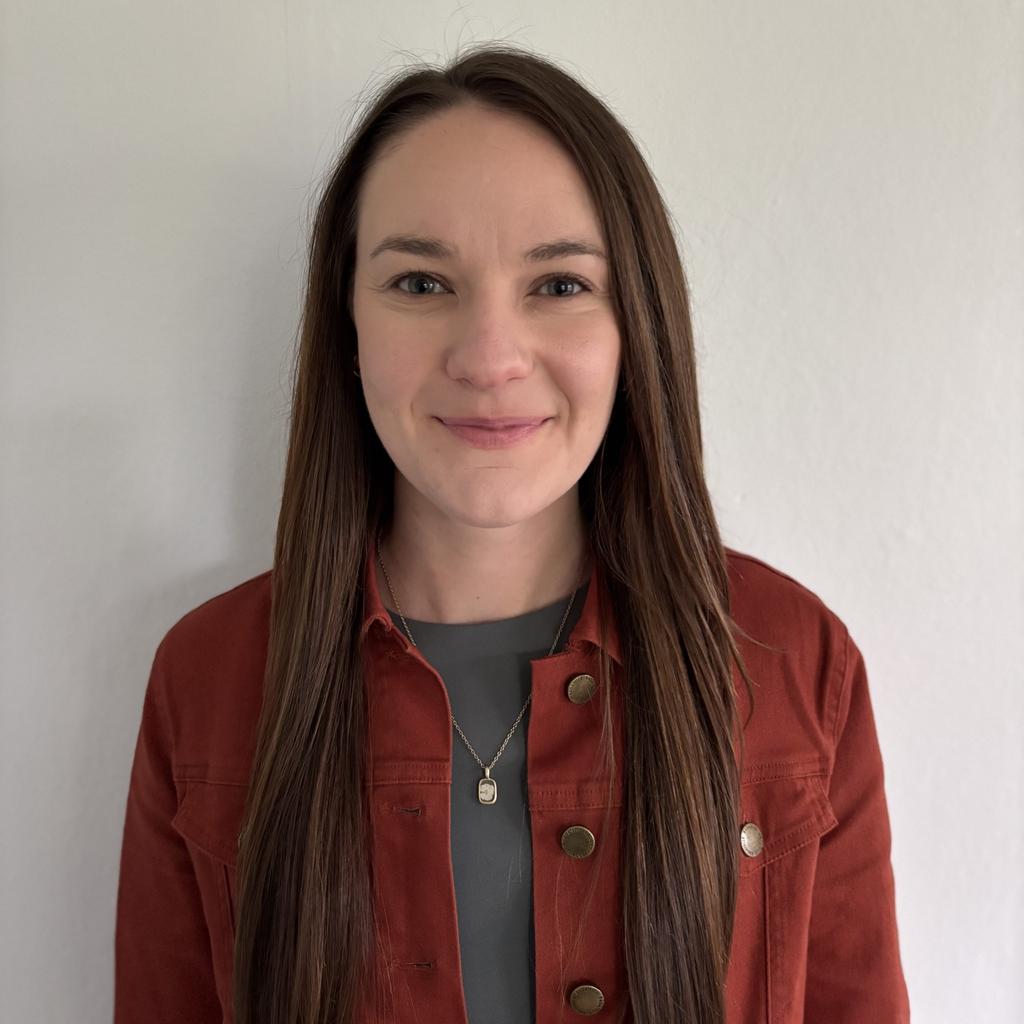Why this resume works
- Highlights industry-specific skills: Showcasing tattoo design expertise and a Master of Fine Arts in visual arts, the applicant aligns their skills with industry expectations for specialized roles.
- Quantifies accomplishments: With measurable accomplishments like a 35% increase in client retention and over 200 custom tattoos annually, the applicant highlights significant impact and value.
- Illustrates problem-solving ability: Implementing new health protocols at Ink Vibes Studio showcases the applicant’s problem-solving skills and proactive approach to improving workplace safety.
More Tattoo Artist Resume Examples
Take a look at our tattoo artist resume examples to see the best ways to highlight your creativity, precision, and client interaction skills. These art resume examples will guide you in crafting a resume that showcases your artistic expertise and customer service experience.
Entry-Level Tattoo Artist
Why this resume works
- Effective use of keywords: By incorporating keywords like “custom tattoo designs” and “client consultations,” the applicant positions their resume to pass applicant tracking systems (ATS).
- Shows digital literacy: Showcasing a knack for digital tools, the applicant’s streamlined inventory systems highlight computer skills, which are important for modern workplaces.
- Centers on academic background: The education section stands out with academic achievements from Oregon State University, emphasizing distinction and specialization early in the career trajectory.
Mid-Level Tattoo Artist
Why this resume works
- Points to measurable outcomes: By achieving a 98% satisfaction rate and reducing infections by 20%, the applicant showcases their impact on customer experience and operational efficiency in tattoo artistry.
- Demonstrates language abilities: Language skills in Spanish, French, and German indicate the applicant’s ability to communicate with a diverse client base.
- Displays technical expertise: Certifications in advanced techniques and health safety show the applicant’s deep technical expertise, important for maintaining high standards in tattoo design and application.
Experienced Tattoo Artist
Why this resume works
- Showcases impressive accomplishments: By driving a 30% increase in referral clients and raising client satisfaction rates, the applicant’s accomplishments emphasize their impactful contributions to business growth.
- Emphasizes leadership skills: Leading workshops and training apprentices showcase the applicant’s leadership skills, proving their ability to guide others in mastering advanced tattoo techniques.
- Sections are well-organized: Clear headers and bullet points throughout the resume create an easy-to-scan format, allowing readers to quickly grasp key career highlights and achievements.
Tattoo Artist Resume Template (Text Version)
Linda Martinez
Milwaukee, WI 53202
(555)555-5555
Linda.Martinez@example.com
Skills
- Tattoo design
- Custom illustration
- Client consultation
- Safety and sanitation
- Color theory
- Freehand drawing
- Digital art
- Time management
Languages
- Spanish – Beginner (A1)
- Italian – Beginner (A1)
- French – Beginner (A1)
Professional Summary
Highly skilled tattoo artist with 5 years experience, designing custom tattoos and enhancing client satisfaction. Expert in freehand drawing and digital art, with a strong portfolio showcased in renowned art exhibits.
Work History
Tattoo Artist
Ink Vibes Studio – Milwaukee, WI
March 2023 – June 2025
- Designed 200+ custom tattoos annually
- Increased client retention by 35%
- Implemented new health protocols
Body Art Specialist
Eternal Canvas Artistry – Brookfield, WI
January 2021 – February 2023
- Served 500+ clients with 90% satisfaction
- Streamlined scheduling process by 20%
- Organized successful annual art show
Apprentice Tattoo Designer
Art Fusion Studios – Waukesha, WI
January 2020 – December 2020
- Assisted 50+ artists in design creation
- Contributed to social media growth by 50%
- Managed inventory reducing costs by 15%
Certifications
- Certified Professional Tattoo Artist – National Tattoo Association
- Advanced Artistry Techniques – Art Professionals Institute
Education
Master of Fine Arts Visual Arts
University of Fine Arts New York, New York
June 2019
Bachelor of Arts Art and Design
Art Institute of Chicago Chicago, Illinois
June 2017
Related Resume Guides
Advice for Writing Your Tattoo Artist Resume
Explore insights on how to write a resume tailored for a tattoo artist position. Discover how to craft a resume that highlights your artistic flair, creativity, and unique style while capturing the essence of your experience in the tattoo industry. Whether you’re showcasing your portfolio or detailing your client interactions, these tips will help you stand out and make your mark.
Showcase your portfolio or projects
Including a portfolio or projects on your resume helps show off your style and skills. When a hiring manager is looking for a tattoo artist, they want to see what kind of work you can do. A portfolio lets them see your previous designs and get an idea of your creative range.
To make your portfolio easy to access, consider linking it to an online platform like Behance or Dribbble, or even having a personal website where you showcase your best work. You should also include some select projects directly on your resume—freelance jobs, school projects, and side gigs all count and show you’re active in the art world.
By organizing your projects this way, potential clients or employers can quickly understand what you’ve done before and envision how you might be able to help them with their next big idea.
Example of a projects section
Custom Tattoo Design for Art Festival
Ink Masters Collective
June 2023
- Created a series of custom tattoo designs showcased at the annual art festival, attracting over 500 attendees.
- Used diverse styles, including watercolor and realism, to cater to a wide audience.
- Collaborated with fellow artists to conduct live tattooing demonstrations, improving community engagement.
Tattoo Sleeve Commission for Musician
Liam Stone, Indie Musician
March 2023 – April 2023
- Designed and executed a full sleeve tattoo inspired by the musician’s album artwork.
- Incorporated symbolic elements meaningful to the client, ensuring personal connection and satisfaction.
- Received positive feedback from fans on social media, boosting clientele through word-of-mouth.
Need help making your resume stand out? Explore our professional resume examples for ideas on how to make yours shine.
Emphasize your most relevant skills
As a tattoo artist, both technical and soft skills are important for success in creative roles. Technical skills like drawing, shading, and using tattoo equipment are essential. These show your ability to create detailed and beautiful tattoos.
Soft skills such as communication, patience, and customer service help build good relationships with clients. They ensure clients feel comfortable and satisfied with their tattoos.
Including a dedicated skills section on your resume makes it easy for employers to see what you bring to the table. This section can list software abilities like Adobe Photoshop or Illustrator that help design tattoos digitally. You can also mention artistic talents like sketching or color theory knowledge.
To make your resume even stronger, weave your skills into the work experience bullet points. For example, you might say “created custom tattoo designs using Adobe Illustrator” or “communicated effectively with clients to understand their design preferences.”
This approach shows how you’ve applied your skills in real-world situations, making your experience more impactful and relevant to potential employers.
For tattoo artists, select a resume format that highlights your artistic skills, portfolio, and unique design style prominently.
Choose a professional resume template
When choosing a resume template as a tattoo artist, look for one that balances creativity with professionalism. A clean and structured layout helps showcase your skills and experience clearly while reflecting your artistic style.
Avoid overly decorative designs that might distract from the content. Instead, opt for templates with strong visual hierarchy, where headings and sections are easy to distinguish. This ensures your resume looks polished while subtly emphasizing your creative abilities.
Consider templates optimized for applicant tracking systems (ATS). These formats use simple fonts, clear section headers, and avoid excessive graphics or unusual text formatting that could cause issues when scanned by software. Even in a creative field like tattoo artistry, ensuring compatibility with ATS can help your application reach hiring managers more smoothly.
Focus on showcasing your work history, technical skills like tattoo techniques, and any relevant accomplishments within the design of the template. A well-chosen format allows you to highlight these details without overwhelming the reader or compromising professionalism.
Show off your skills and creativity by using our Resume Builder to craft a standout resume with easy-to-use templates that highlight your best talents.
Format your resume properly
Proper formatting is key for a tattoo artist’s resume to ensure readability and professionalism. For experienced tattoo artists, use a chronological resume format to highlight consistent roles and career growth.
If you’re newer to the field or focusing on artistic skills, opt for a functional resume that emphasizes your portfolio, technical abilities, and creativity over work history. Tailor the structure to show expertise in your craft.
5 resume formatting tips
- Use professional fonts: Select readable resume fonts like Arial or Calibri in 10-12 pt size for clarity.
- Create clear section headings: Organize resume with bold headings for sections like “Work Experience” and “Portfolio.”
- Use bullet points: Present skills and achievements in short, impactful bullet points for easy scanning.
- Aim for one-page length: Keep your resume to one page unless extensive experience demands more detail.
- Ensure proper spacing and alignment: Maintain consistent margins and spacing for a clean, professional appearance.
Try the ATS Resume Checker to spot over 30 common problems with your resume’s layout and wording. Get quick advice on boosting your resume score right away.
FAQ
Do I need to include a cover letter with my tattoo artist resume?
Yes, including a cover letter with your tattoo artist resume can make a strong impression on potential employers. Using our Cover Letter Generator gives you the chance to highlight your artistic style, professional skills, and passion for the craft beyond what’s listed in your resume.
For example, you can share how your unique approach to custom designs or experience working with diverse clients aligns with the studio’s culture or aesthetic.
You can also use cover letter examples to explain any gaps in your work history or emphasize key accomplishments, like community involvement or awards for tattoo artistry.
Taking this extra step shows dedication and professionalism, which are qualities highly valued in creative industries like tattooing.
How long should a tattoo artist’s resume be?
For a tattoo artist, it’s ideal to have a one-page resume to efficiently highlight your artistic skills and experience. Focus on your specialization styles, years in the field, notable studios or conventions, and any relevant certifications or awards.
If you have extensive experience or unique projects worth mentioning, a two-page resume is fine. Just make sure all details are relevant, showing off your creative versatility and client happiness.
Balance showcasing your technical skill with a personal touch in each piece. Check out our guide on how long a resume should be for more specific tips.
How do you write a tattoo artist resume with no experience?
If you’re starting in tattoo artistry, crafting a resume with no experience involves showcasing your skills, education, and relevant practice to demonstrate your potential. Here are some tips for making an engaging entry-level tattoo artist resume:
- Emphasize training and education: Include any formal education in art or design, as well as specific tattoo training or workshops you’ve attended. Mention the institution’s name, courses taken, and any significant projects.
- Showcase your portfolio: Even without professional experience, you should have sample work that demonstrates your artistic abilities. Highlight key pieces that exhibit different styles or techniques and ensure they’re accessible online via a link on your resume.
- Highlight transferable skills: Focus on transferable skills like creativity, attention to detail, communication with clients, and understanding of hygiene practices. If you’ve worked in related fields like graphic design or illustration, emphasize those experiences.
Explore resources on starting a career in tattoo artistry for more insights into building an impressive resume from scratch.
Rate this article
Tattoo Artist
Additional Resources
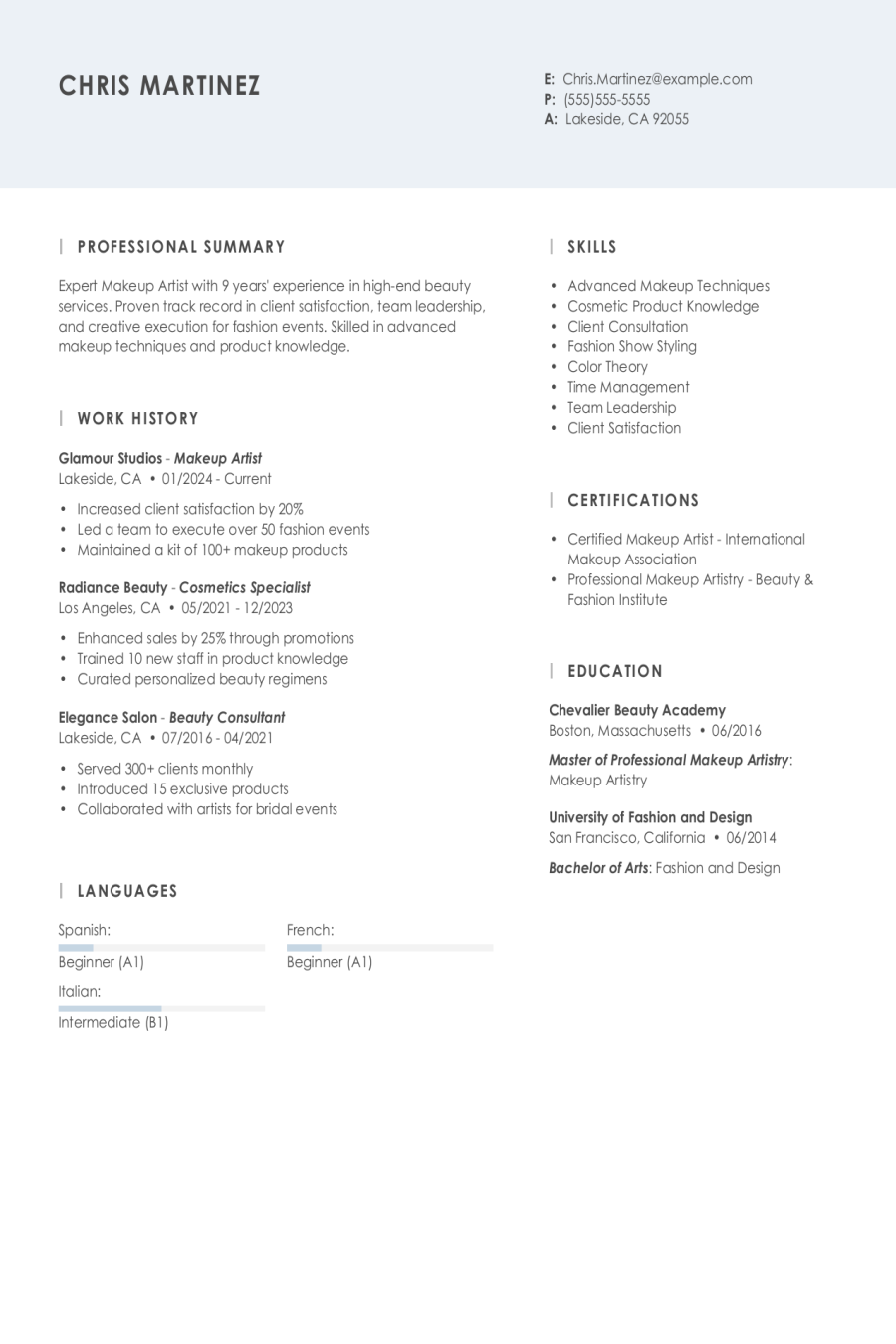
Makeup Artist Resume Examples & Templates for 2025
Discover makeup artist resume examples to see how you can highlight your creativity and technical skills. Learn to showcase your experience with beauty techniques for a show-stopping resume.Build my resumeImport
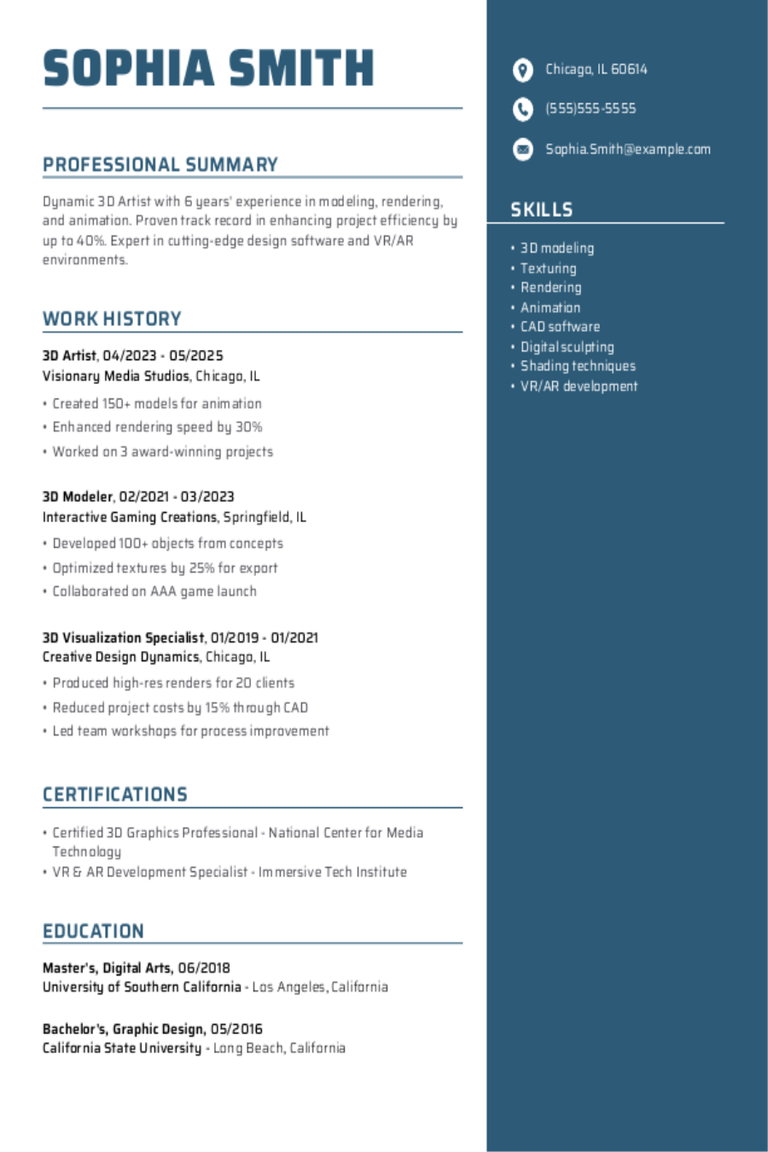
3D Artist Resume Examples & Templates for 2025
Explore 3D artist resume examples and tips to learn how to showcase your creative projects, technical skills, and unique style to stand out to potential employers.Build my resumeImport existing resumeCustomize
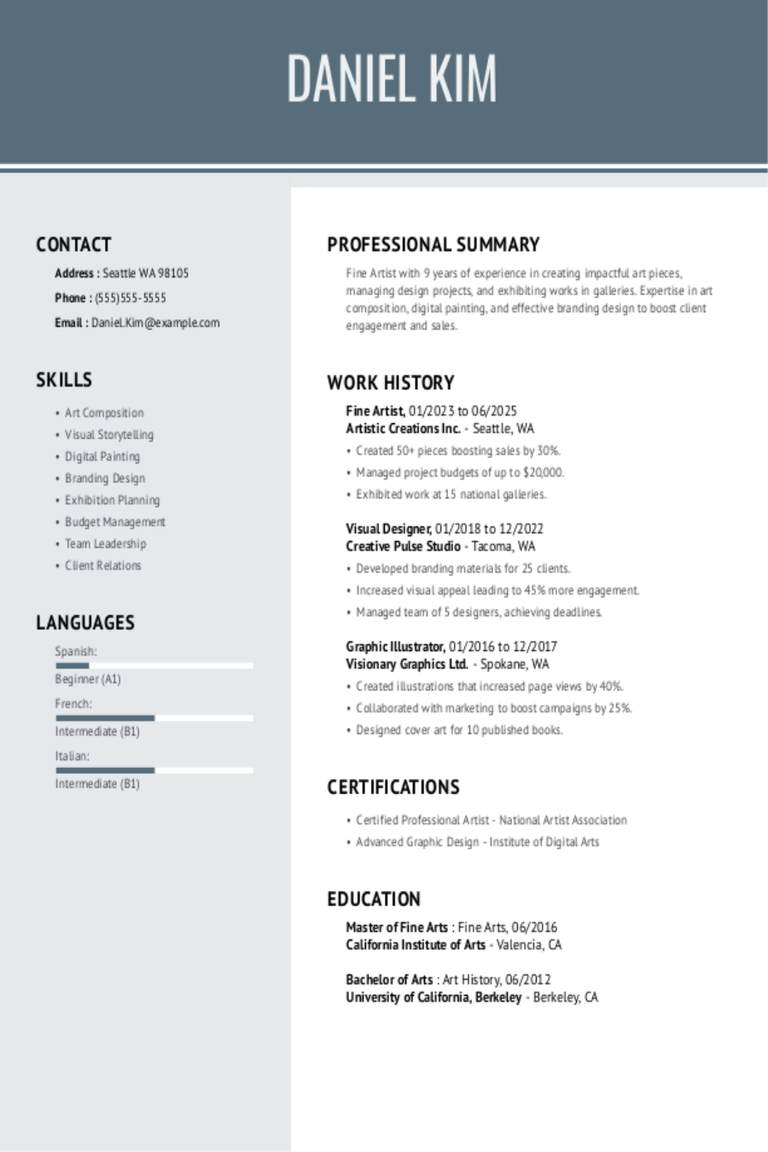
Fine Artist Resume Examples & Templates for 2025
Explore fine artist resume examples to see how to showcase your creativity and unique style. Use these tips to highlight your skills, projects, and exhibitions that demonstrate your artistic talent
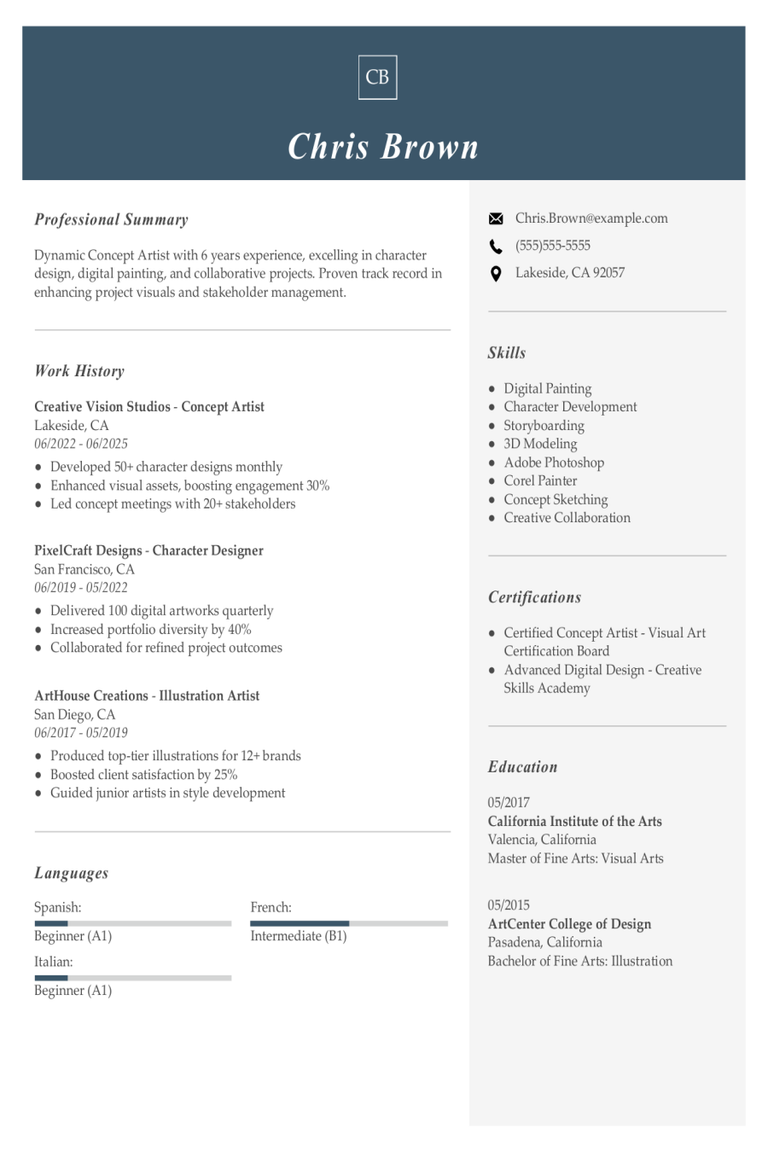
Concept Artist Resume Examples & Templates for 2025
Explore concept artist resume examples and tips to learn how to showcase your creativity, drawing skills, and how you bring ideas to life.Build my resumeImport existing resumeCustomize this templateWhy
